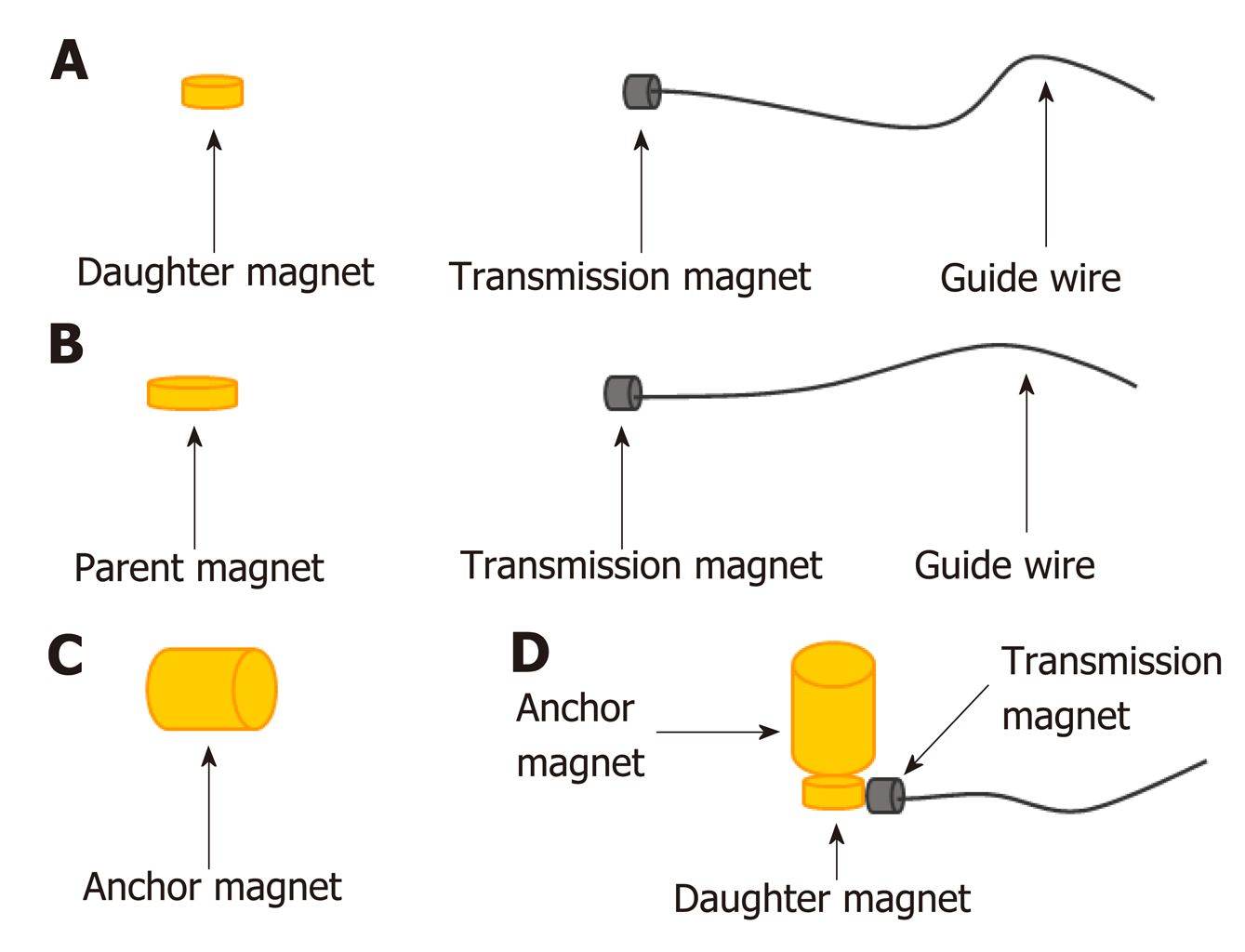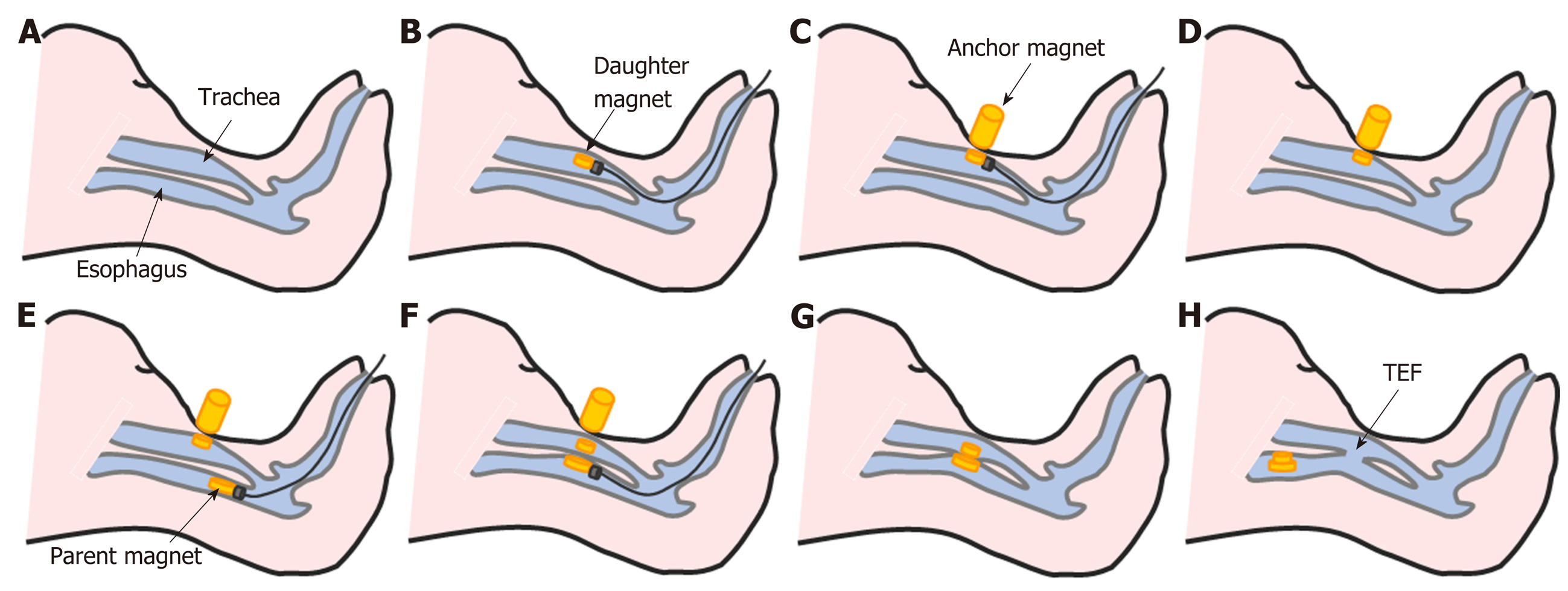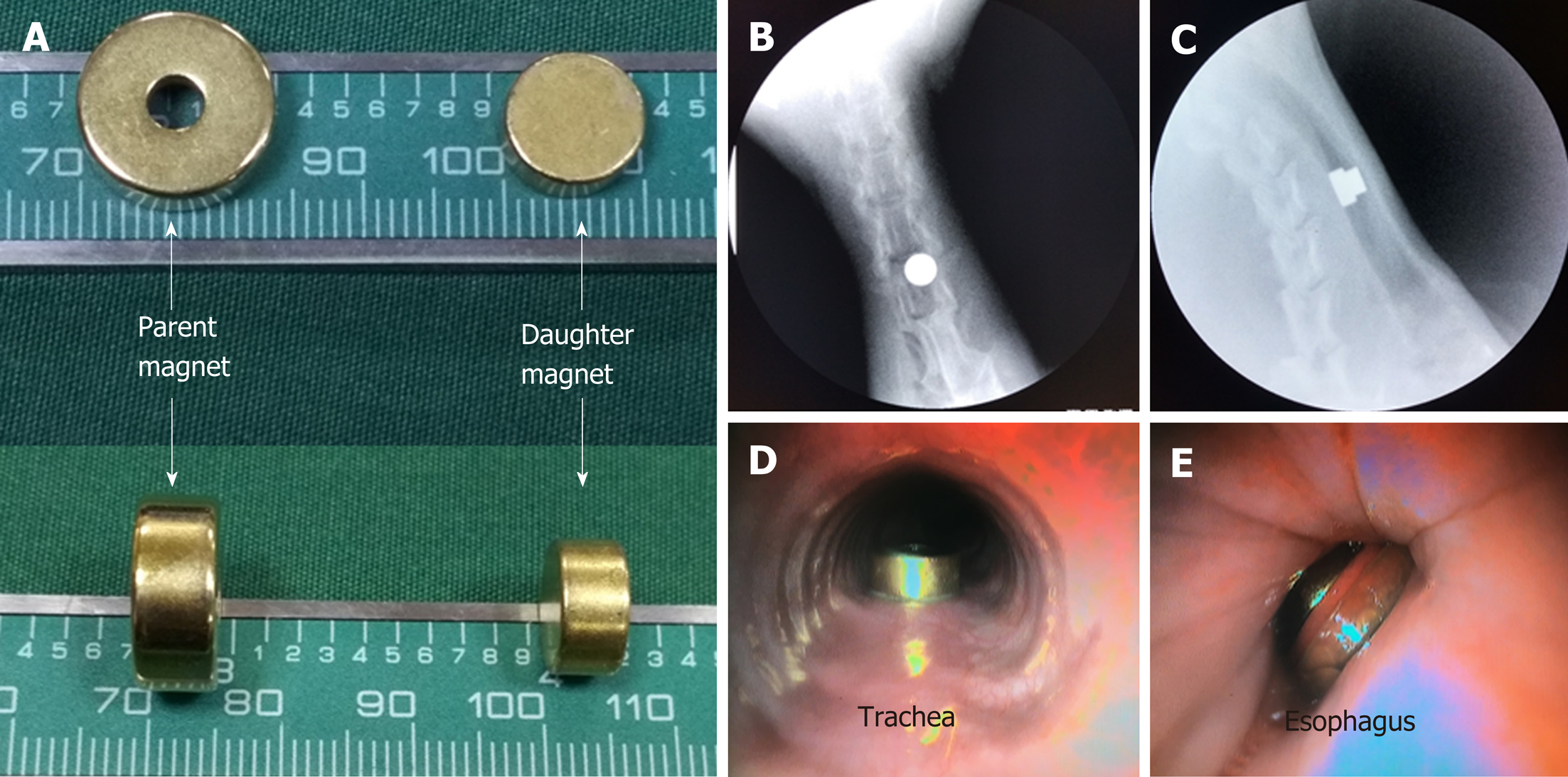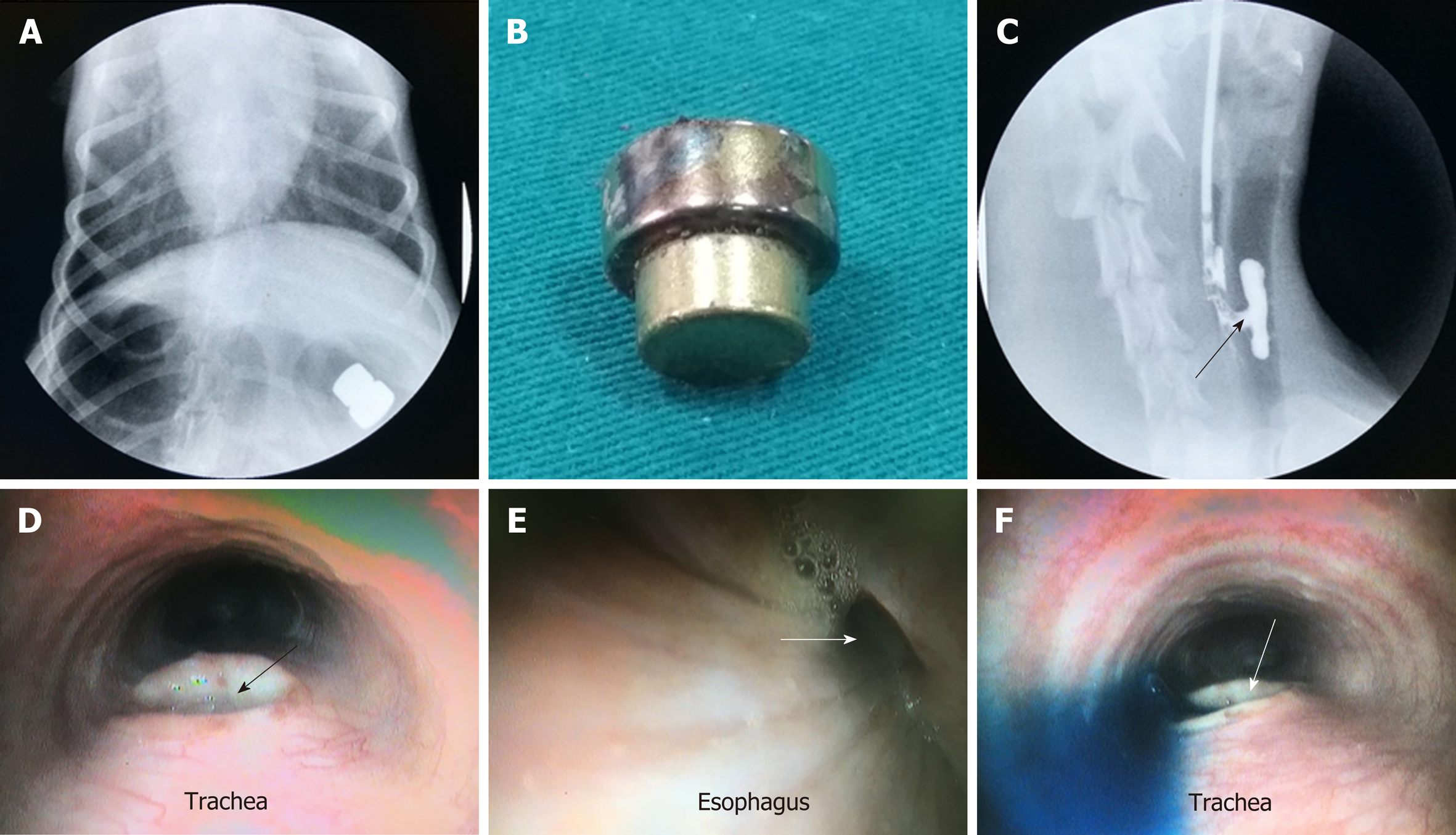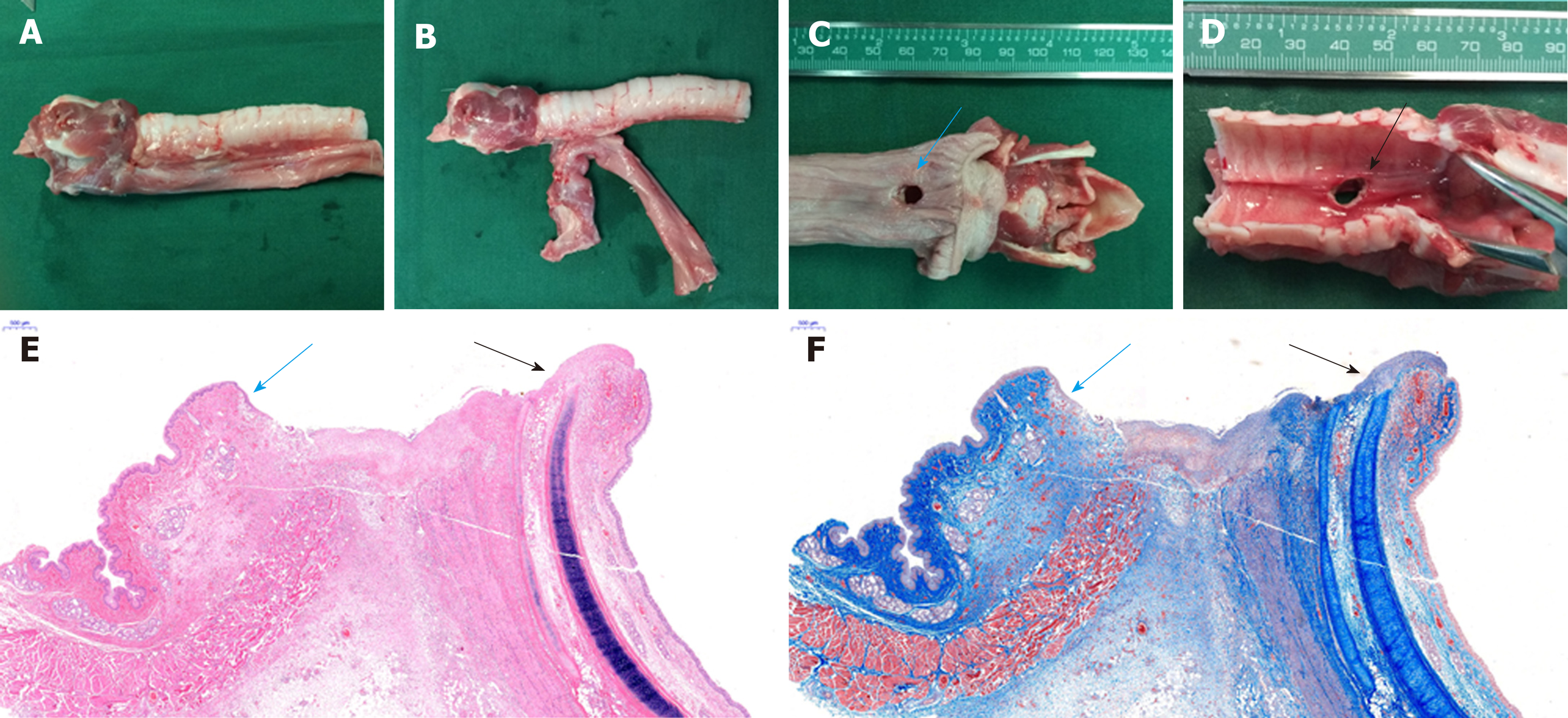Copyright
©The Author(s) 2019.
World J Gastroenterol. Aug 14, 2019; 25(30): 4213-4221
Published online Aug 14, 2019. doi: 10.3748/wjg.v25.i30.4213
Published online Aug 14, 2019. doi: 10.3748/wjg.v25.i30.4213
Figure 1 The magnetic device.
A: The daughter magnet and the transmission magnet; B: The parent magnet and the transmission magnet; C: The anchor magnet; D: The transmission magnet and the anchor magnet can be used to position the daughter magnet.
Figure 2 Study procedures.
A: Normal anatomy of the trachea and esophagus in the beagle; B: The daughter magnet was inserted into the trachea and advanced to the target location using the transmission magnet and the guide wire; C: The anchor magnet was placed on the neck of the animal over the trachea to fix the daughter magnet in its target location; D: The guide wire and transmission magnet were withdrawn from the trachea; E: The parent magnet was inserted into the cervical esophagus and advanced to the target location using the transmission magnet and the guide wire; F: The parent magnet and daughter magnet were attracted to each other by magnetic force; G: The guide wire and transmission magnet were withdrawn from the esophagus, and the anchor magnet was removed; H: 4-6 d later, the necrotic tissue between the two magnets had been shed and the parent magnet and daughter magnet had detached from the target location. The tracheoesophageal fistula was formed.
Figure 3 The study procedures were performed successfully in all six beagles.
A: The parent and daughter magnets; B and C: Fluoroscopy showing that the parent and daughter magnets were coupled and retained in the target location; D and E: Endoscopy showing the magnets in the trachea and the esophagus.
Figure 4 Results after implantation.
A: 6 d after magnet implantation: X-ray showing that the magnets were located in the digestive tract; B: 8 d after magnet implantation: the magnets were expelled from the animal through the digestive tract; C: 8 d after magnet implantation: esophageal angiography showing the contrast media flowing from the esophagus into the trachea; D: Bronchoscopy showing a fistula located in the posterior wall of the trachea; E: Gastroscopy showing a fistula located in the anterior wall of the esophagus; F: Gastroscopy/bronchoscopy showing methylene blue flowing from the esophagus into the trachea.
Figure 5 Gross and histological observations.
A: Gross specimens of the trachea and esophagus; B: There was no tissue adhesion between the trachea and the esophagus, except around the fistula; C: Gross specimen showing the fistula in the esophagus; D: Gross specimen showing the fistula in the trachea; E and F: Histological analysis demonstrated that the esophageal mucosa (blue arrow) and pseudostratified ciliated columnar epithelium (black arrow) were absent at the site of the fistula.
- Citation: Gao Y, Wu RQ, Lv Y, Yan XP. Novel magnetic compression technique for establishment of a canine model of tracheoesophageal fistula. World J Gastroenterol 2019; 25(30): 4213-4221
- URL: https://www.wjgnet.com/1007-9327/full/v25/i30/4213.htm
- DOI: https://dx.doi.org/10.3748/wjg.v25.i30.4213









